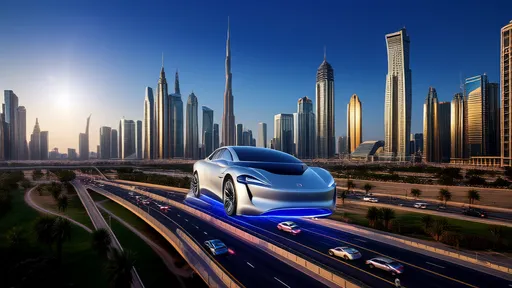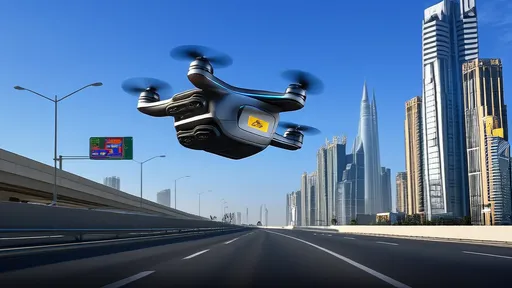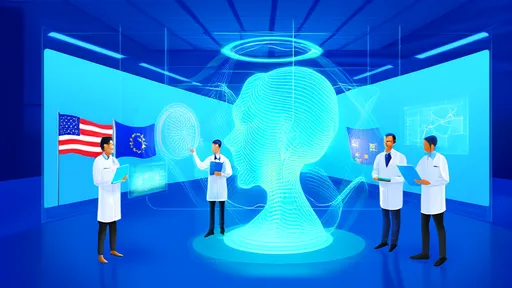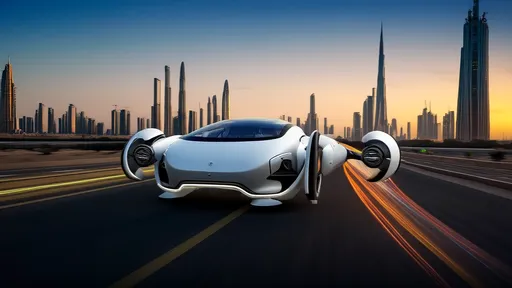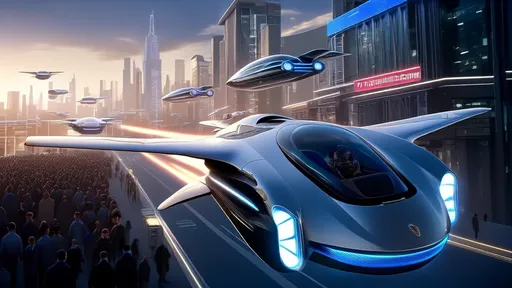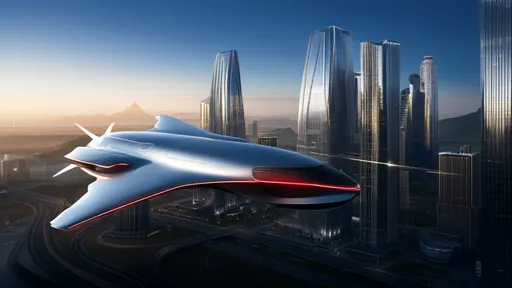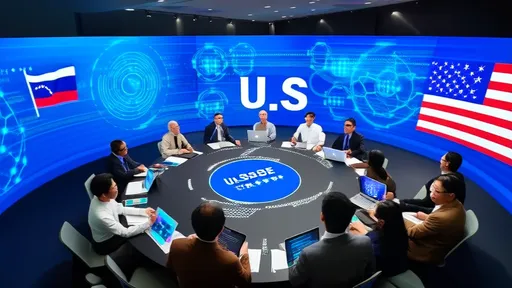In a move signaling a new era of technological collaboration, Southeast Asian nations and the United States are forging a groundbreaking partnership in artificial intelligence development. This strategic alliance emerges at a critical juncture when global AI governance remains fragmented and the technology's potential to reshape economies and societies becomes increasingly apparent. The collaboration represents more than just technical cooperation—it embodies a shared vision for responsible innovation that respects cultural diversity while addressing common challenges.
The partnership gained significant momentum during the recent ASEAN-US Summit, where leaders from both sides acknowledged the transformative power of AI and the urgent need for international cooperation. What makes this collaboration particularly noteworthy is its comprehensive approach, encompassing not only technological development but also ethical frameworks, capacity building, and infrastructure development. As one senior diplomat noted during the closed-door sessions, "We're not just sharing technology; we're co-creating the future of intelligent systems that reflect our shared values and diverse needs."
American technology giants have already begun establishing research hubs across Southeast Asia, with Singapore, Vietnam, and Thailand emerging as primary innovation centers. These facilities aren't merely satellite offices but fully integrated research centers working on region-specific AI applications. Microsoft's recently launched AI research center in Singapore, for instance, focuses specifically on developing multilingual AI systems capable of understanding and processing the numerous languages and dialects spoken across Southeast Asia. Similarly, Google's expanded presence in Jakarta includes specialized teams working on AI solutions for agriculture and disaster prediction tailored to the region's unique geographical challenges.
The educational component of this partnership deserves particular attention. Several American universities, including Stanford and MIT, have announced joint programs with ASEAN counterparts to develop specialized AI curricula. These initiatives go beyond traditional academic exchanges, incorporating industry partnerships and practical training components. The Massachusetts Institute of Technology recently signed memoranda of understanding with three ASEAN universities to establish joint research laboratories focused on AI applications in healthcare, renewable energy, and smart city development. These laboratories will serve as innovation hubs where students and researchers from both regions can collaborate on real-world projects.
Infrastructure development forms another crucial pillar of this collaboration. The United States has committed substantial resources to help build the computational infrastructure necessary for advanced AI research and development across Southeast Asia. This includes establishing high-performance computing centers and improving broadband connectivity in rural areas. The infrastructure initiative recognizes that AI advancement requires not just algorithms and data but also the physical infrastructure to support computation-intensive research. As part of this effort, American companies are working with local partners to develop edge computing solutions that can function effectively even in areas with limited internet connectivity.
Ethical considerations and governance frameworks represent perhaps the most innovative aspect of this trans-Pacific AI partnership. Rather than adopting existing Western models, the collaborators are developing new ethical guidelines that incorporate Southeast Asian values and perspectives. This includes establishing regional standards for data privacy, algorithmic transparency, and accountability mechanisms. The working groups tasked with developing these frameworks include not only technologists and policymakers but also ethicists, social scientists, and community representatives. This multidisciplinary approach ensures that the resulting guidelines reflect the region's cultural diversity while maintaining global interoperability.
The economic implications of this collaboration are profound. Industry analysts predict that the partnership could accelerate AI adoption across Southeast Asia by several years, potentially adding billions to regional GDP. More importantly, it positions ASEAN nations not merely as consumers of AI technology but as active contributors to its development. Local startups are already benefiting from increased access to American expertise and venture capital, while established Southeast Asian companies are forming strategic partnerships with US tech firms to develop AI solutions for regional markets. These collaborations span various sectors, from financial services and healthcare to agriculture and manufacturing.
Cybersecurity cooperation has emerged as an unexpected but vital component of the AI partnership. As AI systems become more integrated into critical infrastructure, ensuring their security becomes paramount. Joint teams of American and ASEAN cybersecurity experts are working to develop robust security protocols and threat detection systems specifically designed for AI applications. This collaboration includes regular security audits, information sharing about emerging threats, and joint training exercises. The cybersecurity dimension reflects the partners' recognition that technological advancement must be accompanied by strengthened security measures.
Cultural and linguistic adaptation represents one of the most challenging yet rewarding aspects of this collaboration. American AI developers are working closely with local experts to ensure that AI systems understand and respect the cultural nuances of Southeast Asian societies. This goes beyond simple translation—it involves developing AI that can comprehend context, recognize cultural references, and adapt to different communication styles. The collaboration has already produced several innovative approaches to cross-cultural AI design, including novel methods for training language models on low-resource languages common in the region.
The partnership also addresses the crucial issue of workforce development. As AI transforms industries across Southeast Asia, ensuring that workers have the skills needed for the jobs of tomorrow becomes essential. Joint initiatives between American educational institutions, technology companies, and ASEAN governments are creating comprehensive retraining programs and developing new educational pathways for AI-related careers. These programs focus not only on technical skills but also on the critical thinking and creative problem-solving abilities that will remain valuable even as automation advances.
Looking ahead, the ASEAN-US AI partnership appears poised for significant expansion. Both sides have expressed interest in broadening the collaboration to include more countries and additional focus areas. Potential future directions include joint research on AI for climate change mitigation, collaborative development of AI standards for international trade, and expanded cooperation on AI applications for public health. The success of the initial initiatives has created momentum for even more ambitious projects, with several new working groups expected to be established in the coming months.
This trans-Pacific AI collaboration represents a new model for international technological cooperation—one based on mutual respect, shared benefits, and common values. By combining American technological expertise with Southeast Asian innovation and cultural understanding, the partnership has the potential to create AI systems that are not only technologically advanced but also socially responsible and culturally appropriate. As the collaboration continues to evolve, it may well serve as a blueprint for how nations can work together to harness the power of artificial intelligence for the benefit of all humanity.
The once-fantastical vision of humanoid robots, long confined to the pages of science fiction and the silver screen, is steadily materializing into a tangible engineering reality. This evolution is not the result of a single, monumental breakthrough but rather a profound and intricate symphony of advancements across a multitude of scientific and engineering disciplines. The quest to create machines that not only look but also move, perceive, and interact with the fluidity and adaptability of humans represents one of the most ambitious technological endeavors of our time. It is a grand convergence, where progress in artificial intelligence, materials science, mechanical engineering, and cognitive science coalesces to breathe life into metal and silicon, pushing the boundaries of biomimicry to unprecedented heights.
The recent inclusion of humanoid robots in the 2025 Top Ten Global Engineering Achievements marks a watershed moment in technological history. This recognition transcends mere academic acknowledgment; it represents a collective global validation of decades of research, development, and iterative innovation in robotics. For years, humanoid robots existed primarily in the realms of science fiction and laboratory prototypes, often viewed as fascinating but distant curiosities. Their elevation to a top global engineering feat signals a profound shift—a transition from conceptual marvels to tangible agents of change poised to reshape our societal and industrial landscapes.
In a landmark recognition of human engineering prowess, China's full-ocean-depth manned submersible has been selected among the 2025 Top Ten Global Engineering Achievements, standing shoulder-to-shoulder with revolutionary projects like quantum computing infrastructure and Mars colonization prototypes. This prestigious listing, announced by the International Engineering Consortium earlier this morning, represents more than just technological acknowledgment—it signifies humanity's renewed commitment to conquering Earth's final frontier.
In the heart of Dubai's morning rush hour, the familiar gridlock of Sheikh Zayed Road stretches for kilometers below, but above the shimmering asphalt, a new dimension of transportation is quietly rewriting the rules of urban mobility. As first reported by The Times of India, the city's ambitious flying car initiative has transitioned from futuristic concept to operational reality, with commuters now gliding between skyscrapers in electric vertical take-off and landing vehicles. This isn't a scene from a science fiction film but the new daily reality for a growing number of Dubai residents who have traded their terrestrial commutes for the freedom of three-dimensional travel.
The desert skies of the United Arab Emirates, long dominated by the sleek silhouettes of commercial airliners and private jets, are poised to welcome a new kind of vessel. In a landmark decision that signals a significant leap from science fiction to tangible reality, a specific model of flying car has been granted a special certificate of flight from the UAE's civil aviation authority. This is not merely a provisional test permit for a closed course; it is a crucial regulatory nod that brings the vision of urban air mobility one giant step closer to the daily lives of the region's residents.
In a move signaling a new era of technological collaboration, Southeast Asian nations and the United States are forging a groundbreaking partnership in artificial intelligence development. This strategic alliance emerges at a critical juncture when global AI governance remains fragmented and the technology's potential to reshape economies and societies becomes increasingly apparent. The collaboration represents more than just technical cooperation—it embodies a shared vision for responsible innovation that respects cultural diversity while addressing common challenges.
The Euclid Space Telescope, humanity's newest and most ambitious eye on the cosmos, has begun its monumental mission to pierce the profound darkness that envelops our universe. Launched into the silence beyond our atmosphere, its purpose is not merely to capture stunning celestial portraits but to map the invisible architecture of reality itself. For decades, astronomers have known that the cosmos we see—the glittering tapestry of stars, galaxies, and nebulae—comprises a mere five percent of the total content of the universe. The remaining ninety-five percent is a profound mystery, a dual enigma composed of dark matter and dark energy. These are the phantoms of physics, entities that do not emit, absorb, or reflect light, yet whose gravitational influence dictates the fate of everything we hold visible. Euclid is our most sophisticated attempt to date to bring these shadows into the light, to understand the hidden forces that have shaped the universe's past and will determine its ultimate destiny.
Beijing's National Stadium, once the iconic centerpiece of the 2008 Summer Olympics, echoed with a different kind of applause this week. The thunderous cheers were not for human athletes pushing the limits of physical endurance, but for their mechanical counterparts—humanoid robots competing in the inaugural World Humanoid Robot Sports Games. The air, thick with the whirring of servos and the collective anticipation of engineers and spectators, marked a pivotal moment in the history of robotics and international sport.
The landscape of oncology treatment is undergoing a profound transformation, driven by the emergence of third-generation antibody-drug conjugates (ADCs). These sophisticated therapeutic agents represent a significant leap forward in the quest for precision medicine, offering new hope for patients battling various forms of cancer. Unlike conventional chemotherapy that attacks both healthy and cancerous cells indiscriminately, these advanced biologics deliver potent cytotoxic agents directly to tumor cells, minimizing damage to healthy tissues and reducing debilitating side effects.
In the relentless battle against cancer, a revolutionary class of therapeutics has emerged, earning the evocative moniker of "precision missiles" for their ability to deliver potent cytotoxic agents directly to malignant cells while sparing healthy tissue. These are Antibody-Drug Conjugates, or ADCs, and they represent a sophisticated fusion of biologic targeting and potent chemotherapy, a paradigm shift in oncology that is redefining treatment expectations for a growing number of cancers.
The desert skies above Dubai witnessed a historic moment last week as the sleek silhouette of a flying car cut through the cerulean blue, marking what many industry experts are calling the dawn of a new era in personal transportation. The demonstration, orchestrated by the pioneering aviation firm AeroMobil Emirates, was not merely a test flight; it was a powerful statement of intent, a tangible promise of a future once confined to the pages of science fiction.
In a remarkable demonstration of growing consumer confidence in aerial mobility solutions, global pre-orders for flying cars have surged past the 7,000-unit milestone. This significant threshold, reached far earlier than most industry analysts had projected, signals a fundamental shift in public perception about the viability of personal air transportation. What was once confined to science fiction novels and futuristic concept videos is rapidly transforming into a tangible consumer product category with demonstrated market demand.
In the shimmering heat of the Arabian Gulf, a new silhouette is beginning to pierce the horizon. It is not the familiar form of a commercial airliner nor the sleek profile of a private jet, but something altogether more futuristic—a flying car. This vision, once confined to the realms of science fiction, is fast becoming a tangible reality, and it is Chinese innovation that is poised to turn the skies above Dubai, Abu Dhabi, and Riyadh into a dazzling new theater of urban mobility.
The relentless march of artificial intelligence demands computational power on a scale previously unimaginable. At the heart of this revolution lies the Graphics Processing Unit, or GPU, which has evolved from a specialized graphics rendering component into the primary engine for AI workloads. The latest generation of GPU architectures represents a paradigm shift, not merely an incremental improvement. These new designs are fundamentally re-engineering the silicon to tackle the unique and colossal demands of modern AI, with a core focus on achieving unprecedented levels of computational density and efficiency through hyper-scale integration.
The ASEAN-US AI Cooperation Forum concluded its third annual session this week with a renewed commitment to bridging the digital divide through focused capacity building and infrastructure development. Held against the backdrop of rapid technological advancement, the forum brought together policymakers, industry leaders, and academics to chart a collaborative path forward, recognizing that the benefits of artificial intelligence must be distributed equitably to ensure regional stability and prosperity.



